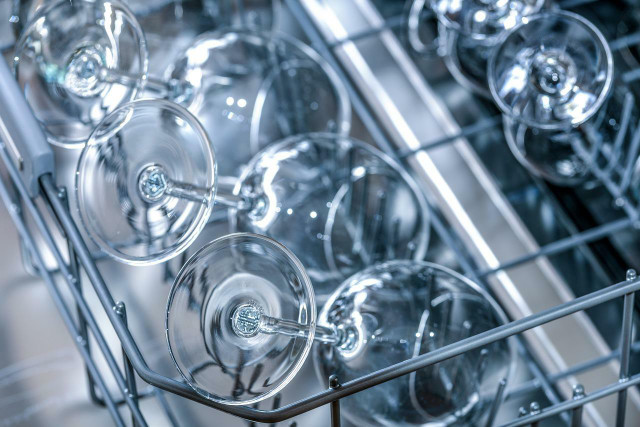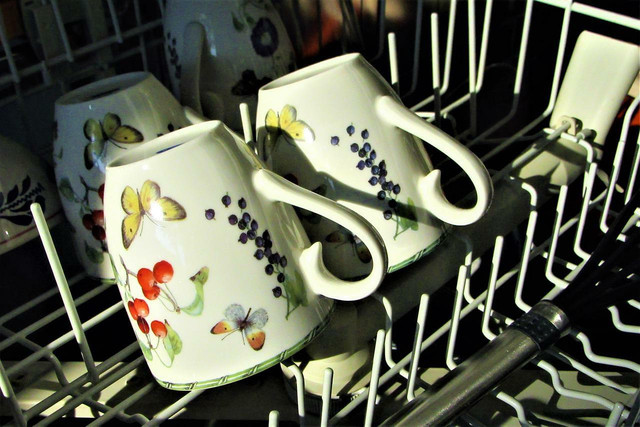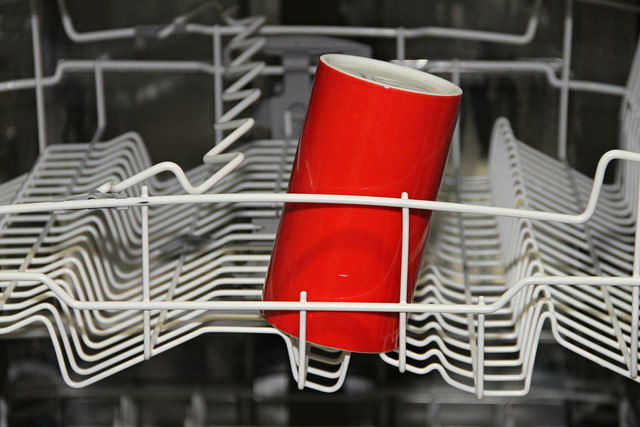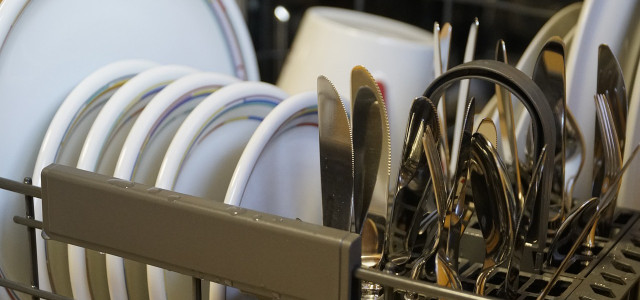Loading a dishwasher correctly can be a quickly acquired skill, and ensures sparkling dishes every time. Follow our top tips on how to properly load a dishwasher, and discover some energy-saving benefits.
Dishwashers, on average, use almost 10 times less water to wash the same amount of dishes than washing them by hand. If you are looking to buy a dishwasher, you can also look out for energy-efficient models, which use much less water per load.
Not only does using a dishwasher in the right way save water, but it also makes our lives more convenient. That being said, they can also be one of the most hard-working household appliances. We can help them out, by loading them carefully and keeping them well-maintained.
Most dishwashers come with a manual, so it is a good idea to be familiar with any special instructions, but don’t worry if it is lost in a drawer, or thrown away — we have some great tips on how to properly load a dishwasher so that you will get gleaming results.
How to Properly Load a Dishwasher: 8 Top Tips

- You don’t need to pre-rinse. Many people hand rinse their dishes before loading. Even for stubborn dirty items, many modern dishwashers have a rinse-only cycle, still offering more energy efficiency than rinsing by hand.
- Make sure the dishwasher is fully loaded. This limits water consumption.
- Know the items that don’t fare well in a dishwasher. These include wooden items which may crack (chopping boards, large wooden spoons, etc.) and non-stick pans.
- When stacking your cutlery and utensils, give them some space, and mix them up. Placing items like forks together may encourage them to stack.
- Place eating knives (not serrated), forks, and spoons with the eating end up. Sharp knives, keep face down — you don’t want to cut yourself emptying the dishwasher.
- Load the dishwasher from back to front. You’ll get more in this way before everything seems cluttered.
- Place bowls and cups face down.
- Place light and small items on the top shelf and heavier, larger items at the bottom, and yes, there is a system for optimal placing. Read on, for more top and bottom shelf advice.
Loading a Dishwasher — What Belongs on Top?



When loading your dishwasher, it’s a good idea to start at the top. Cups and glasses, along with small plates and bowls, can be arranged here. Leave a little space between items for optimal water flow. Also be careful with delicate items — if placed too close together, they may bang together and possibly break.
If you are washing any plastic, it is also a good plan to place these on the top rack, where the pressure is a little less and the heat not as strong. This will minimize any warping or melting.
What to Put on the Bottom Rack of Your Dishwasher?



Larger plates and dirtier bowls and dishes should go on the bottom, where the spray is stronger. Again, leave spaces between items so the water and detergent have a chance to reach everything.
Pans and trays can also be put on the bottom. Just be careful not to block the jets with large items. If you are able, place items on an angle, for best cleaning results. Chopping boards can go in as well, but again, take heed of the wood and plastic warnings. If placing these in the dishwasher, they are best put at an angle, on the side.
Dishwasher Maintenance Tips
Your dishwasher can be one of your best friends in the kitchen. Treat it nicely and it will repay the favor.
- Read the manual, if you have it, and follow the suggested maintenance instructions. You can also often find these online.
- Keep the filter clean, and check for any blockages. For more information see here: How to Unclog Your Dishwasher: A Step-by-Step Guide.
- Keep the doors, seals and spray arm clean, by wiping with a damp cloth, preventing a build-up of grime. Doors and seals can be wiped down whenever needed, but at least once per month. The spray arm can be cleaned less regularly. Once every six months should suffice.
- Using your dishwasher regularly should keep it in good working order.
Read more:
- Homemade Dish Soap: DIY Dish Soap and Dishwasher Detergent
- DIY Oven Cleaner: 3 Natural Methods Without Chemicals
- Is Tupperware Dishwasher Safe? Here’s How You Can Tell
Do you like this post?






